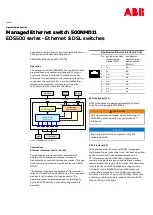
Table 2: Error messages / flash codes red diagnostic LED
Flash pulses
(red)
Designation
Autonomous switch-off
after
Error cause
1 flash pulse
Error (warning) at output Y1
30 min
Fault in output test or voltage at output Y1, although the
output is disabled.
2 flash pulses
Error (warning) at output Y2
30 min
Fault in output test or voltage at output Y2, although the
output is disabled.
3 flash pulses
Error (warning) cross-wire
short
30 min
Cross-wire short between the output cables or fault at both
outputs
4 flash pulses
Error (warning) temperature
too high
30 min
The temperature measurement reveals an internal
temperature that is too high
5 flash pulses
Actuator fault
0 min
Incorrect or defective actuator, bracket broken
6 flash pulses
Fault rotary handle
0 min
Rotary handle not in authorised intermediate position
Continuous red
signal
Internal error
0 min
Device defective
6.5 Solenoid interlock with serial diagnostic function SD
Solenoid interlocks with serial diagnostic cable have a serial input and output cable instead of the conventional
diagnostic output. If solenoid interlocks are wired in series, the diagnostic data are transmitted through the series-
wiring of the inputs and outputs.
Max. 31 solenoid interlocks can be wired in series. For the evaluation of the serial diagnostics line either the PROFIBUS-
Gateway SD-I-DP-V0-2 or the Universal-Gateway SD-I-U-... are used. This serial diagnostic interface is integrated as
slave in an existing field bus system. In this way, the diagnostic signals can be evaluated by means of a PLC.
The necessary software for the integration of the SD-Gateway is available for download at products.schmersal.com.
The response data and the diagnostic data are automatically and permanently written in an input byte of the PLC for
each solenoid interlock in the series-wired chain. The request data for each solenoid interlock is transmitted to the
component through an output byte of the PLC. In case of a communication error between the SD-gateway and the
solenoid interlock, the switching condition of the solenoid interlock is maintained.
Error
Errors which no longer guarantee the function of the safety switchgear (internal errors) cause the safety outputs to be
disabled within the duration of risk. The fault is reset, when the cause is eliminated and bit 7 of the request byte
changes from 1 to 0 or the safety guard is opened. Faults at the safety outputs are only deleted upon the next release,
as the fault rectification cannot be detected sooner.
Fault warning
A fault that does not immediately endanger the safety function of the safety switchgear (e.g. too high ambient
temperature, safety output at external potential, cross-circuit) leads to delayed shutdown (see Table 2). This signal
combination, diagnostic output disabled and safety channels still enabled, can be used to stop the production process
in a controlled manner. An error warning is deleted when the cause of error is eliminated. If the fault warning remains
on for 30 minutes, the safety outputs are also switched off (red LED flashes, see Table 2).



































